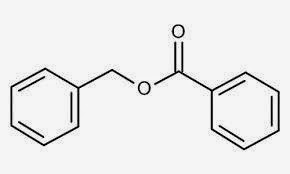What
are alcohols actually?
Alcohol is one of the most vital and common organic compound. It is a derivative of hydrocarbons with a hydroxyl functional group (OH-) attached to a carbon atom of an alkyl or substituted alkyl. The hydroxyl group helps differentiate alcohol from other hydrocarbons as it contributes to physical properties of alcohol.
Alcohols are classified as primary, secondary and tertiary based on where the hydroxyl group is placed in the molecule. These groups vary in their chemical differences. Primary (1°) alcohols have a carbon with the hydroxyl group attached to only one alkyl group. Secondary (2°) alcohols on the hand, have a carbon with the hydroxyl group attached to two alkyl groups whereas tertiary (3°) alcohol have a carbon with the hydroxyl group attached to three alkyl groups.
Physical
Properties of Alcohol
Solubility
Alcohols are soluble because the hydroxyl group in
alcohol can engage in hydrogen bonding with the water molecules. However, the
solubility of alcohols in water decreases as the length of the hydrocarbon
chain increases. Long chain hydrocarbons, usually containing four or more
carbons behaves more like an alkane and tends to form to form two immiscible
layer.
Boiling
Point
Alcohols have hydrogen bonds as their intermolecular
forces, whereas other hydrocarbons besides alcohol have Van der Waals forces as
their intermolecular forces. Hence, alcohols have a higher boiling point than
the other hydrocarbons. The boiling point of alcohol increases as the length of
the hydrocarbon chain increases.
Flammability
As the mass of the molecule increases, the flammability
of the alcohol decreases. During the combustion process, the number of covalent
bonds to be broken in order for the alcohol to burn is greater as the molecular
mass and size of the alcohol increases. Hence more energy is required to break
those bonds, thus decreasing the flammability of alcohols as the molecular mass
and size increases.
Alcohols
and Its Uses
Each type of alcohol has a different IUPAC name. The most
common and simplest ones are methanol, ethanol, propanol and butanol.
Methanol
It is also known as methyl alcohol and wood alcohol, has
the chemical formula CH3OH. Methanol is a versatile compound and is
very often a key component in our daily products. Methanol is usually converted
into formaldehyde, acetic acids and olefin in order to form a product. Among
the materials made from methanol include paint thinner, synthetic fibres,
plastics, solvents, adhesives, gel chafing fuel and many more. The most common
use of methanol is as methanol fuels which is used in transportation. This is
due to the fact that methanol burns cleanly, producing only water and carbon
dioxide, hence resulting in an efficient combustion. Apart from that, it is
widely available around the world, easily distributed and also inexpensive.
However, methanol is toxic and long-term contact with it
may cause several health complications. Methanol poisoning is said to be the
major cause of Parkinson’s disease, which is a kind of motor impairment that
restricts the movement of muscles. Methanol toxicity can even cause vision
loss. Methanol is also extremely flammable and may explode when exposed to open
flames.
Ethanol
It is also called ethyl alcohol and has a chemical formula of C2H5OH. Ethanol is one of the most commonly used alcohol and act as the building block in production of several daily products. Ethanol are said to be a renewable fuel and can be produced from renewable sources like sugar cane. Ethanol is can be produced by fermentation, therefore making it very useful for countries without an oil industry and helps reduce their dependency on imported petrol. Ethanol is widely used in making alcoholic beverages like wine and beer. Due to its high solubility, it is often used as solvents in making perfumes, toiletries, medicines. Ethanol is added to perfumes in order to stop the plant and animal extracts from going off. Ethanol is also used to produce methylated spirit. Methylated spirit is ethanol with small amounts of methanol, which is poisonous, and therefore inedible. Methylated spirit is used in lamps, stoves, to remove ink from non-porous surfaces and as components in household products.
There are several disadvantages of ethanol, mostly involving
alcoholic beverages. Drinking a lot of alcohol in one session, just enough to
get drunk results in short term problems. These problems include, having a
hangover, becoming violent or aggressive, drunk driving which can lead to
accidents, high alcohol intoxication in the body, resorting to drugs and
regretted one night-stands. Heavy drinking on the hand can be more severe and
may cause alcohol addiction, nutrition deficiency, liver failure, cancer, heart
diseases, mental illness and many more.
Conclusion
Hence, alcohol has its pros and cons. Alcohol does not only
refer to alcoholic beverages but consists of several useful daily products.
Examples of them would be the fuel for our cars and also the perfumes that with
use. As for the alcoholic beverages, a controlled consumption would not do you much
harm.








